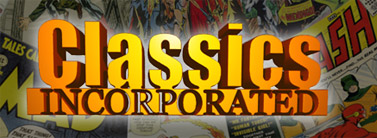Removal Service
|
Click to Enlarge |
 |
 |
Before and after
restoration removal.
This book involved the removal
of a
very minor amount of acrylic
color touch
on part of the spine. Because
of the pro-
fessional nature of the
touch-up, Removal
was a safe choice. |
It's happened so many times. A collector feels ready to send his comics to CGC for grading. He's collected
high grade comics for many years, and has tried his hardest
to make sure none of the books were restored. The
grades start coming back from CGC, and he's pleased. Then it
happens… the dreaded purple label! Turns out his gorgeous
Flash #110, bought 20 years ago from a local dealer,
graded CGC apparent 8.5 slight (P). It has a small hit of black color touch at
the bottom of the spine, and is now considered "restored."
What to do? In a restored holder, the CGC 8.5 Flash
is worth only a percentage of an unrestored 8.5, which is about $1,400 according to GPAnalysis.
A
slightly restored 8.5 is only $500, almost
a thousand dollars less. But given the small nature of the color
touch, it's possible the restoration can be safely removed
with little affect to the grade.
The book is sent to Classics Incorporated for proscreen. We
determine that the black color touch can be removed for $75,
and we estimate the grade will be 7.5 - 8.0 after the work is
completed. Even though the Flash could drop one or
two points
in grade, it's still worth more than if the color touch was
left on (unrestored 8.0 value is about $1200).
|
Click to Enlarge |
 |
 |
In this case a few stress lines
were color
touched in the box, as well as
the purple
banner below it. The removal
resulted
in more noticeable defects,
thus lowering
the grade.
|
Even though restoration removal can increase the value of a
comic like the Flash #110 above, the long-term
effects of this service must be weighed carefully. Many
times removal involves defacement of the comic. Even when
removing slight restoration, it is sometimes necessary to
scrape, dig, cut, and obliterate parts of the comic to
achieve an unrestored grade. This is especially true for
removing amateur restoration, such as glue, and color touch
that has bled through the paper.
The grade of a comic will almost always suffer upon removal
because the restoration was likely hiding defects
underneath, such as color breaks or tears. The best candidates exhibit professional
restoration that can be safely removed with minimal risk to
the book itself. This includes tear seals and support using
rice paper and water-soluble adhesive, and acrylic and
water-based color touch. Our pressing service can also be
used in conjunction with removal to minimize grade loss.
When considering your books for restoration removal, please
note that cleaned covers are irreversible, as well as
trimming, re-glossing and replaced staples. Moderately or extensively restored comics
are not acceptable candidates because
these books were probably lower grade copies to begin with,
and their restoration was necessary.
|
Click to Enlarge |
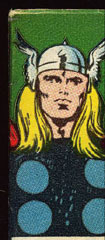 |
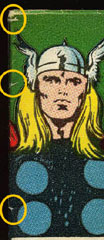 |
A great example of an excellent
removal candidate;
the color touch removal was so
minor that the grade
was barely affected. |
From our experience, we've determined that roughly 80% of
slightly restored comics cannot be safely reversed. When we
do perform restoration removal, we tend to take a
conservative approach, subscribing to the notion that it is
better to remove too little restoration and risk a purple
label from a grading company, rather than go too far and
cause a significant decrease in grade. We feel that an extra
submission fee is worth saving a book from losing one, two
or even three points of grade, simply to guarantee that the
book will get a universal label the "first time around."
If a comic does receive a restored grade despite our best
efforts, we cannot pay the resubmission fees, but we will
attempt further removal at no charge until the
restoration is fully removed.
To submit comics for removal, or any other service
please go here.
Important Note:
Unlike our other services, restoration removal does not
restore or increase the grade of a comic. By doing the
opposite, removal actually seems contrary to our goals of
preservation.
We offer it as a means for collectors to
recover or protect their investment, especially when they
are faced with potential loss of money, like in the Flash
#110 example above.
|
Click to Enlarge |
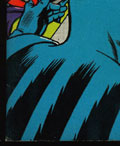 |
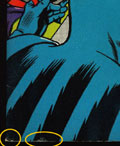 |
Another good example of very
minor color touch removal.
Black parts of the cover are the
most commonly touched
areas on restored books. This
one was acrylic. |
Consideration should be given to the long term. Right
now, the desire for unrestored, blue-label comics is at an
all-time high, encouraging collectors to seek out
restoration removal for financial gain.
And yet restored comics
have been rising in value over the last few years. Because
restoration removal usually causes a comic to drop in grade,
it's possible that the potential profit margin could shrink
to a point where removal is rarely a viable option.
If
you're aware of restoration on some of your books, but you
don't plan on selling anytime soon, you may want to consider
waiting. |
